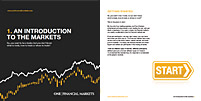

Dollar slips from highs; yen volatile after BOJ shift
Investing.com - The U.S. dollar edged higher in early European trade Friday, adding to the previous session’s strong gains, while the Japanese yen gained after the Bank of Japan shifted its monetary policy.
At 03:15 ET (07:15 GMT), the Dollar Index, which tracks the greenback against a basket of six other currencies, traded 0.1% higher at 101.593, after gaining around 0.7% on Thursday.
Dollar boosted by strong growth data
The dollar surged on Thursday following the release of data showing the U.S. economy grew faster than expected in the second quarter, suggesting a recession is less and less likely in the second half of the year.
This increases the likelihood that the Federal Reserve could further hike interest rates, after doing so once more on Wednesday, if it continues to see strong economic numbers across the board.
“One of the clearest messages coming through from the press conference was that Chair Powell felt the Fed was ‘not in an environment where we want to provide a lot of forward guidance’. In other words: listen to the data, not the Fed,” said analysts at ING, in a note.
Traders have turned a little wary Friday ahead of the release of the June personal consumption expenditure index, the Fed’s favorite inflation gauge, but by the time of the next Fed meeting in September the policymakers will also have two new CPI reports and two new job reports to digest.
Yen volatile after BOJ shift
USD/JPY fell 0.3% to 139.05, in volatile trade after the Bank of Japan's decision on Friday to conduct its yield curve control policy more flexibly, allowing the 10-year yield to move 0.5% around the 0% target.
The 10-year JGB yield spiked to 0.575% for the first time since September 2014 before easing slightly to 0.547%, while the yen swung between gains of over 1% against the dollar and a 1.2% loss, as traders digested the potential ramifications.
Euro edges higher after sharp losses
EUR/USD edged higher to 1.0976, after dropping more than 1% on Thursday in the wake of the European Central Bank’s meeting.
The ECB raised interest rates again and kept its options open on whether more increases will be needed to bring down inflation, but President Christine Lagarde hinted at a pause in its tightening cycle as soon as September.
Inflation data, released earlier Friday, added to the possibility of a pause next month as inflation in the German state of North Rhine-Westphalia, the country’s most populous state, rose an annual 5.8% in July, below the 6.2% expected.
French annual inflation came in at 4.3% in July, a drop from the previous month’s 4.5%, and while Spanish inflation climbed to an annual 2.3%, this is still well below most of the other countries in the eurozone.
Elsewhere, GBP/USD edged lower to 1.2787, after dropping over 1% on Thursday, AUD/USD fell 1.1% to 0.6633 after data showed that Australian retail sales unexpectedly fell in June, while USD/CNY fell 0.2% to 7.1581.
Begin trading today! Create an account by completing our form
Privacy Notice
At One Financial Markets we are committed to safeguarding your privacy.
Please see our Privacy Policy for details about what information is collected from you and why it is collected. We do not sell your information or use it other than as described in the Policy.
Please note that it is in our legitimate business interest to send you certain marketing emails from time to time. However, if you would prefer not to receive these you can opt-out by ticking the box below.
Alternatively, you can use the unsubscribe link at the bottom of the Demo account confirmation email or any subsequent emails we send.
By completing the form and downloading the platform you agree with the use of your personal information as detailed in the Policy.






